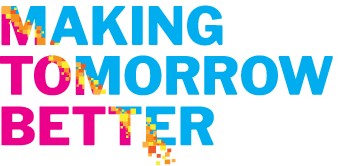Traditional Search Engine Optimization matters
One way to get search engine optimization right is to think of SEO from the earliest stage of conception of a web site, or a web page. That means you’ll write the site for people and you’ll construct the code for search engines.
By way of example consider in what ways the Google result for a search for a small town Nova Scotia arts centre: is it meaningful? clear? invite you to explore further? And do they supply content to Google for the large answer box to the right? More importantly, what does your website look like when you search for it?
Writing for people
- Use your most important keywords, rather than many variants, in headings and body text
- Be authentic and trustworthy
- Use concise sentences that are clear and to the point
- Avoid many run on sentences with complex sentence structure
- Use transition words to achieve a natural read
- Use images to illustrate key messages
- Provide useful links and identify them clearly
Technical SEO
Google especially also looks for other attributes to rank your web pages highly:
- Fast load times, so avoid heavy images and auto-play videos unless your users all have superfast internet
- use SSL (secure socket layer) encryption
- Know what your sitemap.xml and robot.txt files say, i.e. ensure that search engines can index your site
You can optimize every page on your web site. If you have 40 pages that’s easier than if you have 40,000 pages. Simply triage the priority needs for improvement and invest time where you’ll see the biggest return: for instance, home page, secondary landing pages, or key sections.
New content should simply be conceived with these simple SEO concepts in mind, rather than be retrofitted later.
Finally, in addition to simply googling your site and seeing how Google displays your content, you can use SEO tools to evaluate your presence. There are many out there, often free of charge. Two we use are:
Construct for search engines
- Heed the power of the url – use words not acronyms
- Domain and page urls
- Each event, product, service requires its own page with relevant keywords
- Create the most important Meta tags:
- title tag: appears on browser tab and as page name in search results
- description tag: a summary of the content of the specific page
- keyword tag: when search engines cannot read your page, e.g. due to rich media content, they may evaluate your keyword tag
- Create “image ALT” keyword-rich tags for each image on your site (this is also a good accessibility guideline)
Semantic web
An aspect of web 3.0 uses structured data to make events, workshops, blogposts and many other types of content machine-readable. This more advanced way to create standardized meta-data enables your content’s appearance directly in Google answer boxes and more. As the semantic web takes hold this type of discoverability through structured, open and linked data, is expected to overtake basic search. However, it isn’t clear how this will play out exactly or when, so website owners should pay attention to both aspects right now.
A concise presentation on the Semantic Web August 2020





